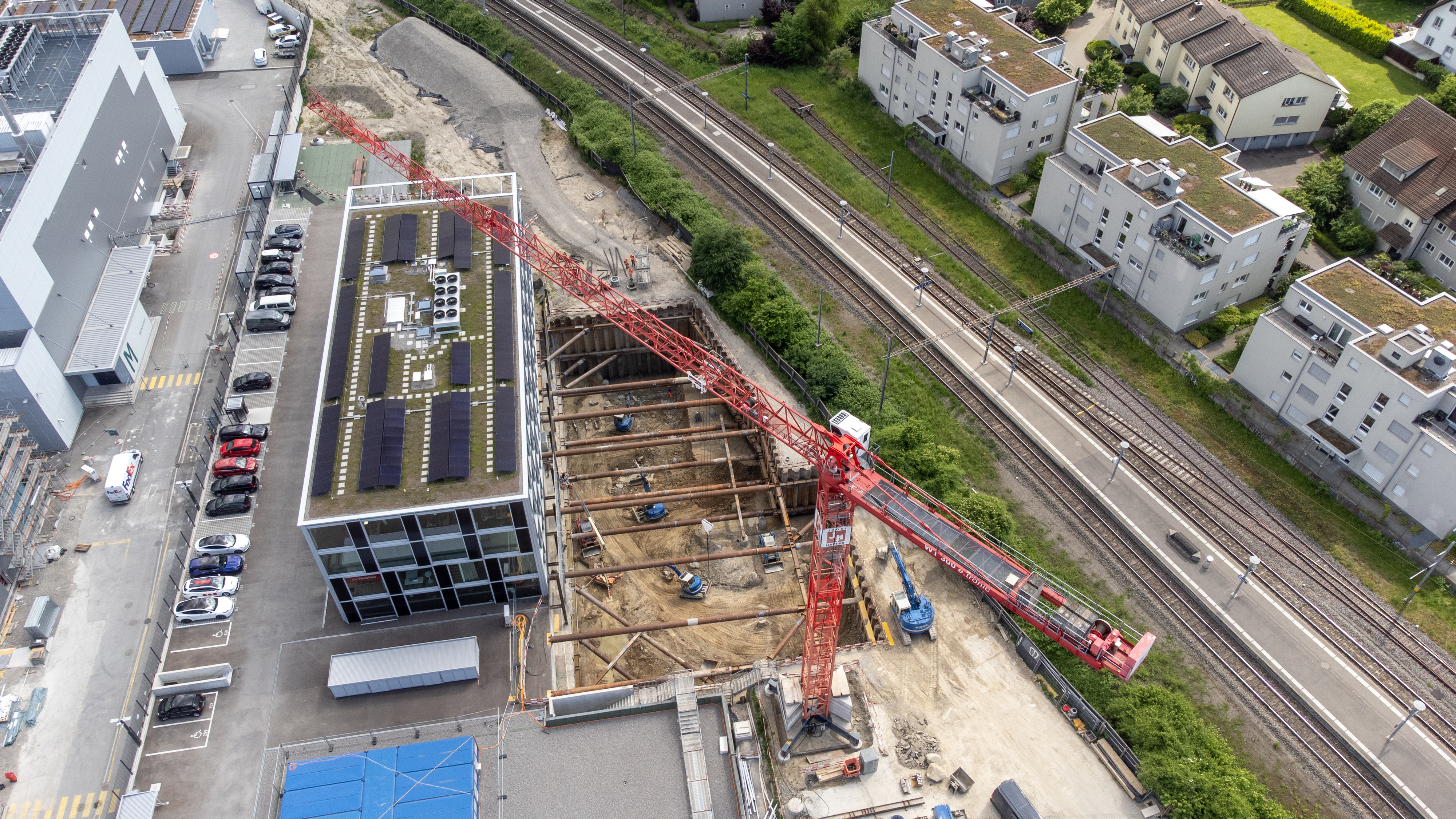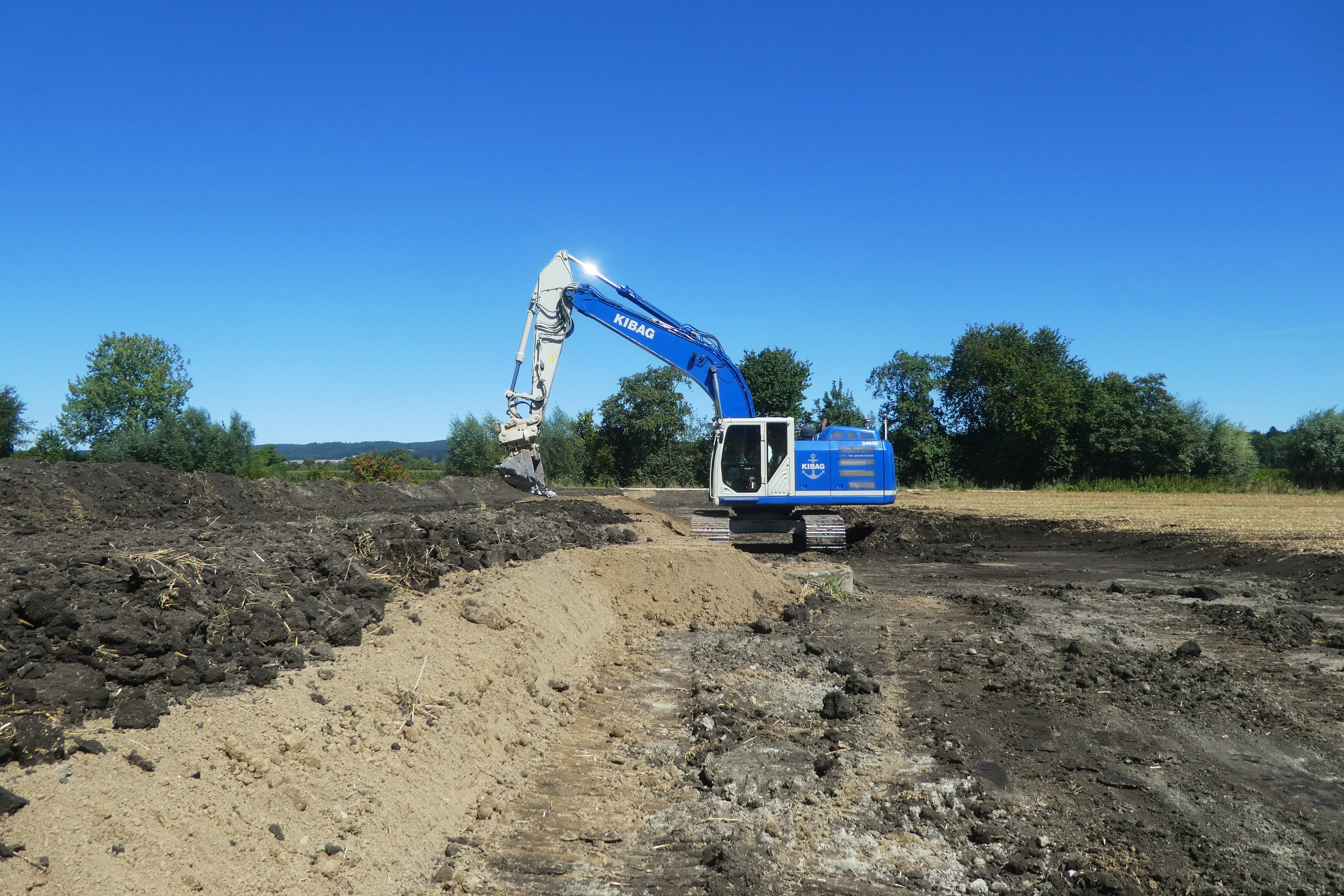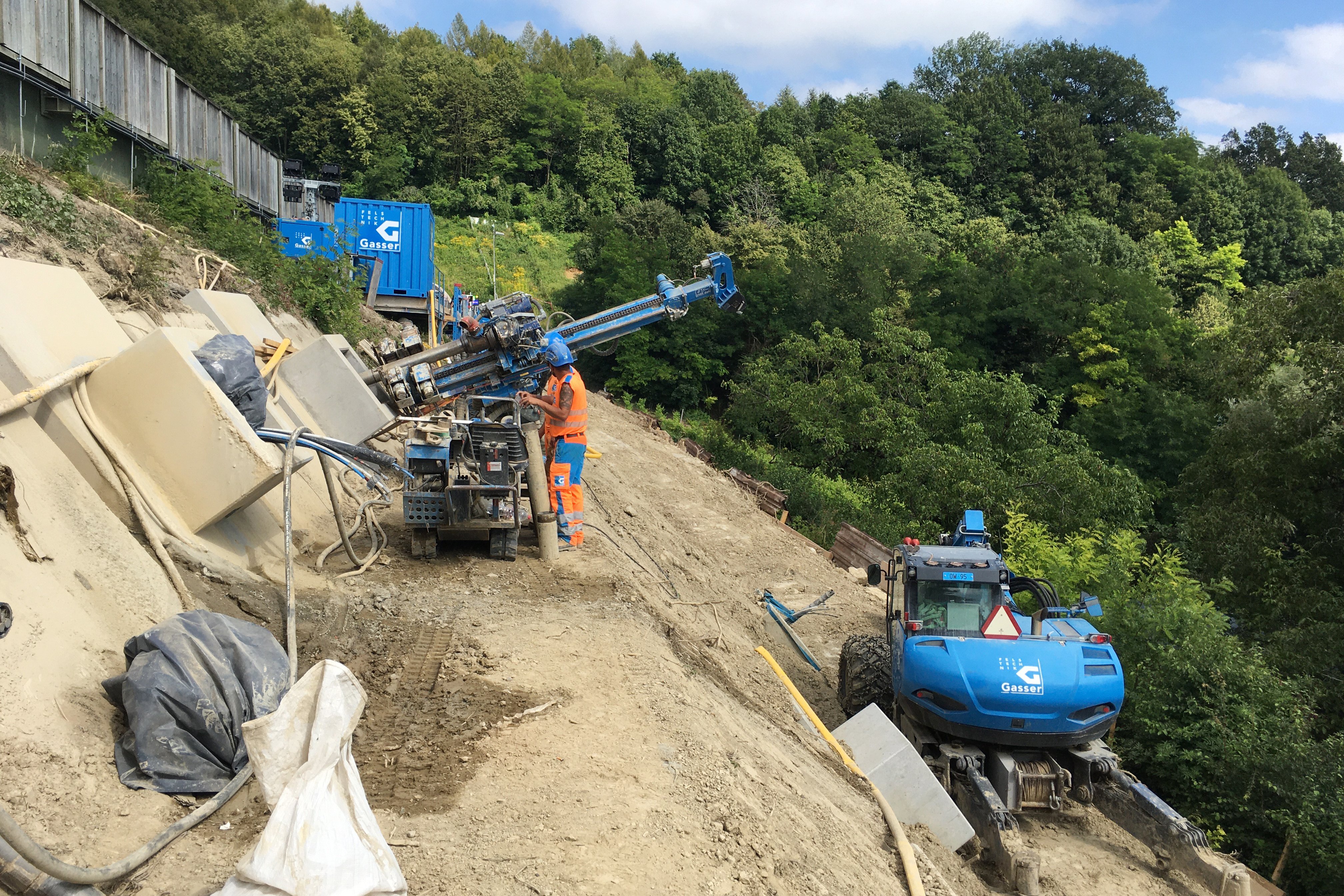Fertile soil from the highway

The Weinland highway between Winterthur North and Kleinandelfingen (ZH) is being widened from two to four lanes; new emergency lanes are also being built. The construction site stretches for around 10 kilometers. A little further away, earth walls can be seen around bare areas: This is where "saved" soil is stored. Environmental experts are taking care of this soil so that it can later be used to create new farmland. We are putting on sturdy shoes - on our journey to the "compensation of crop rotation areas".

It's impressive how big the earthy field is - and how much soil is moved by the excavators. We are in Oberriet near Adlikon (ZH). The highway is nowhere to be seen, and yet this is a construction site related to the extension of the A4 between Winterthur and Andelfingen.
An excavator shovel picks up soft, dark soil and heaves it onto a large yellow dumper truck. The dark soil is humus, the most fertile soil - there is a lot of it in Oberriet. Further over, a second excavator is removing light brown soil: This is subsoil, but there is not much of it here. The field as a whole is therefore not considered particularly fertile. Not yet.
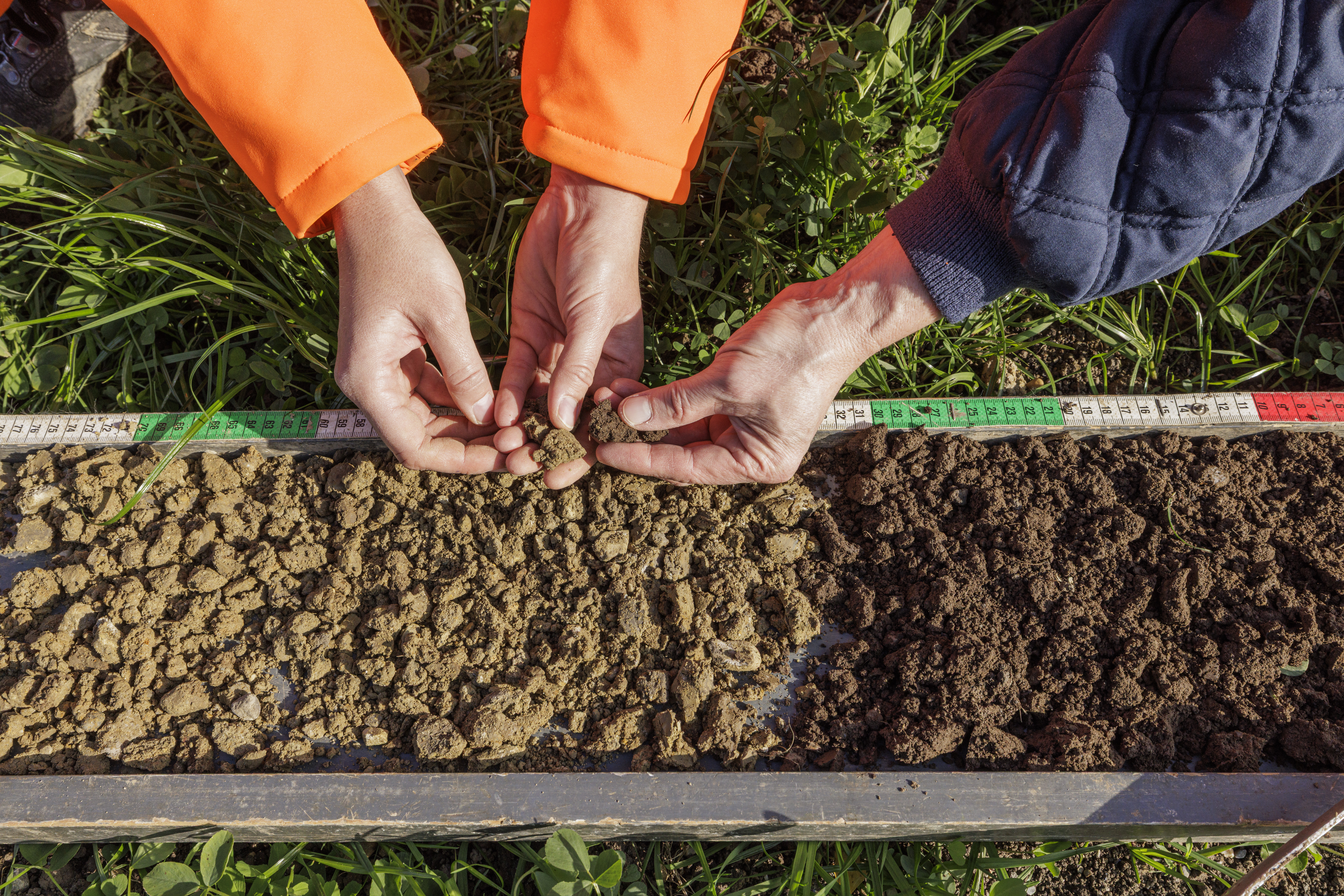
"You're doing well," says Matias Laustela, Head of Environmental Planning at Basler & Hofmann, to the excavator operator. "You're removing exactly the right height." it is precisely 30 centimetres in this corner of the field. The excavator operator looks at the display in his cab. It shows a 3D terrain model that Basler & Hofmann created based on the approved project. On the display, the excavator operator can see exactly how much soil he has to remove and where. Sensors on the excavator shovel give him the necessary feedback.

The field in Oberriet is being upgraded for agriculture. The soil here, currently only suitable for arable farming to a limited extent and partly marshy, is to become a crop rotation area - particularly productive agricultural land.
To achieve this, the soil must be prepared and rebuilt. Humus, which has to make way for the expansion of the A4 highway, will be added later, as will the appropriate subsoil - in exactly the quantity and quality required for a crop rotation area at this location. "We expect around 25,000 cubic meters of soil and excavated material from the expansion of the Weinland freeway to be added to this field in the winter half-year and summer of 2026," says Matias.

If farmland is lost, it is compensated for
The engineering consortium Sieber Cassina + Partner AG and Basler & Hofmann have been commissioned to implement such crop rotation areas around the Weinland highway. Soil experts such as Matias Laustela and project engineer Celina Steffani are responsible for pedological site support during construction. Our client is the Federal Roads Office (Fedro). The aim is to "compensate for crop rotation areas", i.e. arable land that is taken up by the highway expansion. If crop rotation areas are built over in one place, they must be replaced elsewhere by new areas of the same quality or by upgrading existing land. When motorways are built, Fedro is obliged to compensate for the loss of CFA.
21 hectares of agricultural land will be used for the expansion of the Weinlandautobahn: around 14 hectares will be temporarily occupied for the construction site and around 11 hectares will be permanently built over. This means that 11 hectares of land in the region will have to be compensated for. If possible, even more fertile cultivated land will be created.
During the construction period, around 15 excavators are working along the highway to remove soil and create large-scale temporary soil storage areas. Three to four times a week, our soil specialists check whether the machine operators are proceeding as planned and removing the right amount of soil with their excavators and wheel loaders.
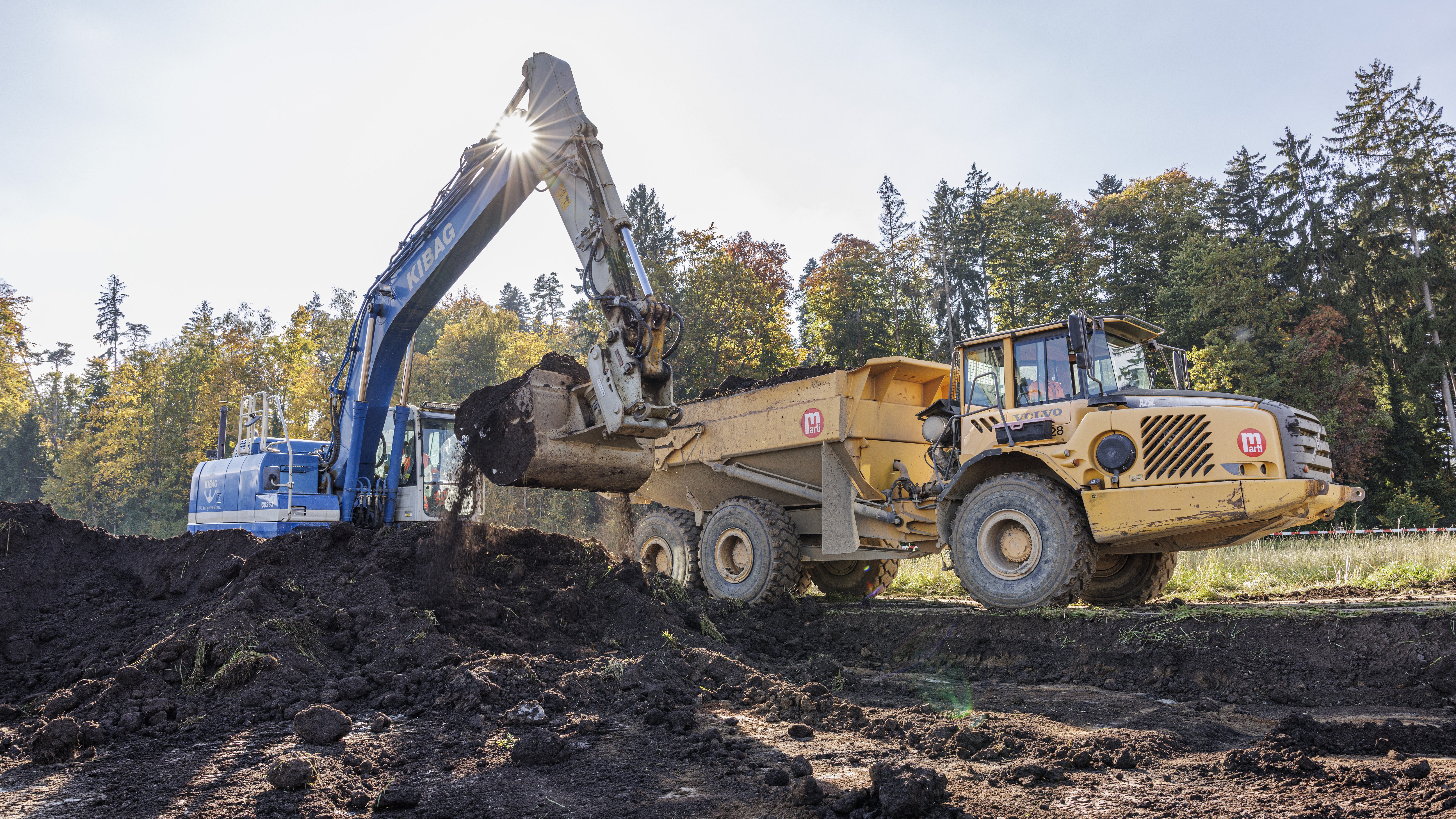
Crop rotation areas - created by specialists
Change of location: We drive to Neftenbach (ZH) to a field where the ground has already been prepared for reconstruction. The autumn sun is glistening, but it is not idyllic: in front of us lies a wide, stony field; the roar of the highway and construction site noise are audible.
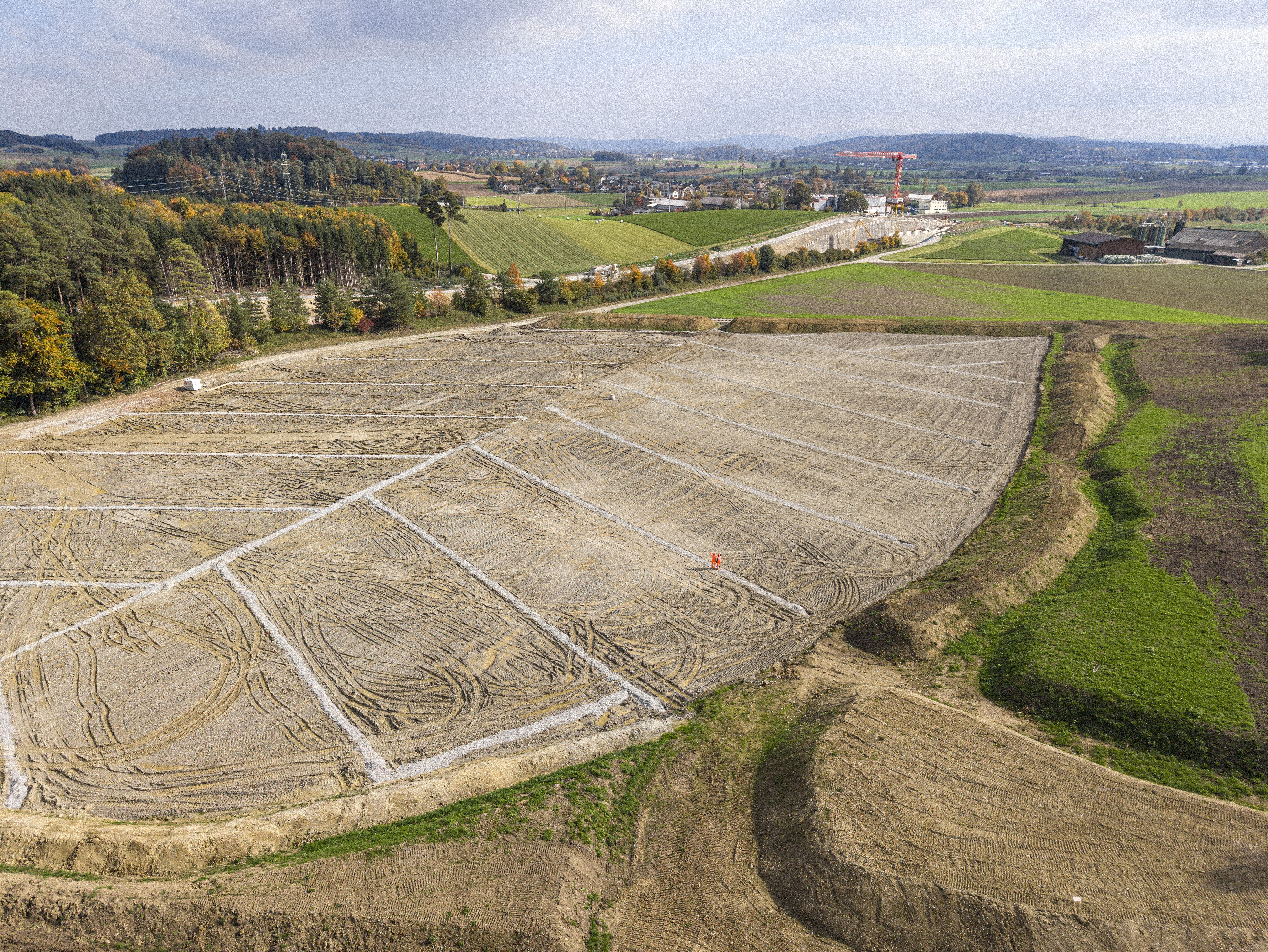
Celina Steffani and Matias Laustela climb onto the earth banks around the field. This is where good soil is temporarily stored that was removed by the excavators during the A4 expansion. Mounds of earth with humus and mounds of earth with subsoil are neatly separated. Grass is also sprouting, the temporarily stored soil has been sown. "The soil must remain green and biologically active," explains Celina. "The aim is to have a green meadow on the temporary storage areas in the spring, so that the farmer can even mow once before we apply the soil to the raw grading."
The rough level - that is the gray, stony field, the prepared subsoil. A year ago there was a hollow here, now the surface is level and stable. Drainage pipes have been installed so that Water can drain away. Reconstruction will begin in spring 2026: First, 50 centimetres of subsoil will be applied to the raw level, followed by 30 centimetres of topsoil (the humus). This creates a crop rotation area. Until the soil is applied, it must be maintained over the winter. Our experts regularly check the condition and quality of the soil. "For example, we have to make sure that the subsoil is loose enough so that the roots can get through and the Water doesn't stagnate," says Celina. We also check that no neophytes are growing on the temporarily stored soil.

A huge temporary storage facility for soils
A short time later, we are standing on an installation site next to the highway. Once again, the scale of the concept design and the environmental construction support becomes apparent: extensive, grass-covered soil storage areas bear witness to the enormous quantities of soil that are being removed and temporarily stored. The construction site containers and machines look like small Lego bricks next to them. Matias and Celina can often be found at this site: checking the temporary soil storage facilities or at construction meetings to plan the timing of the work and make arrangements with the site supervision and construction companies.
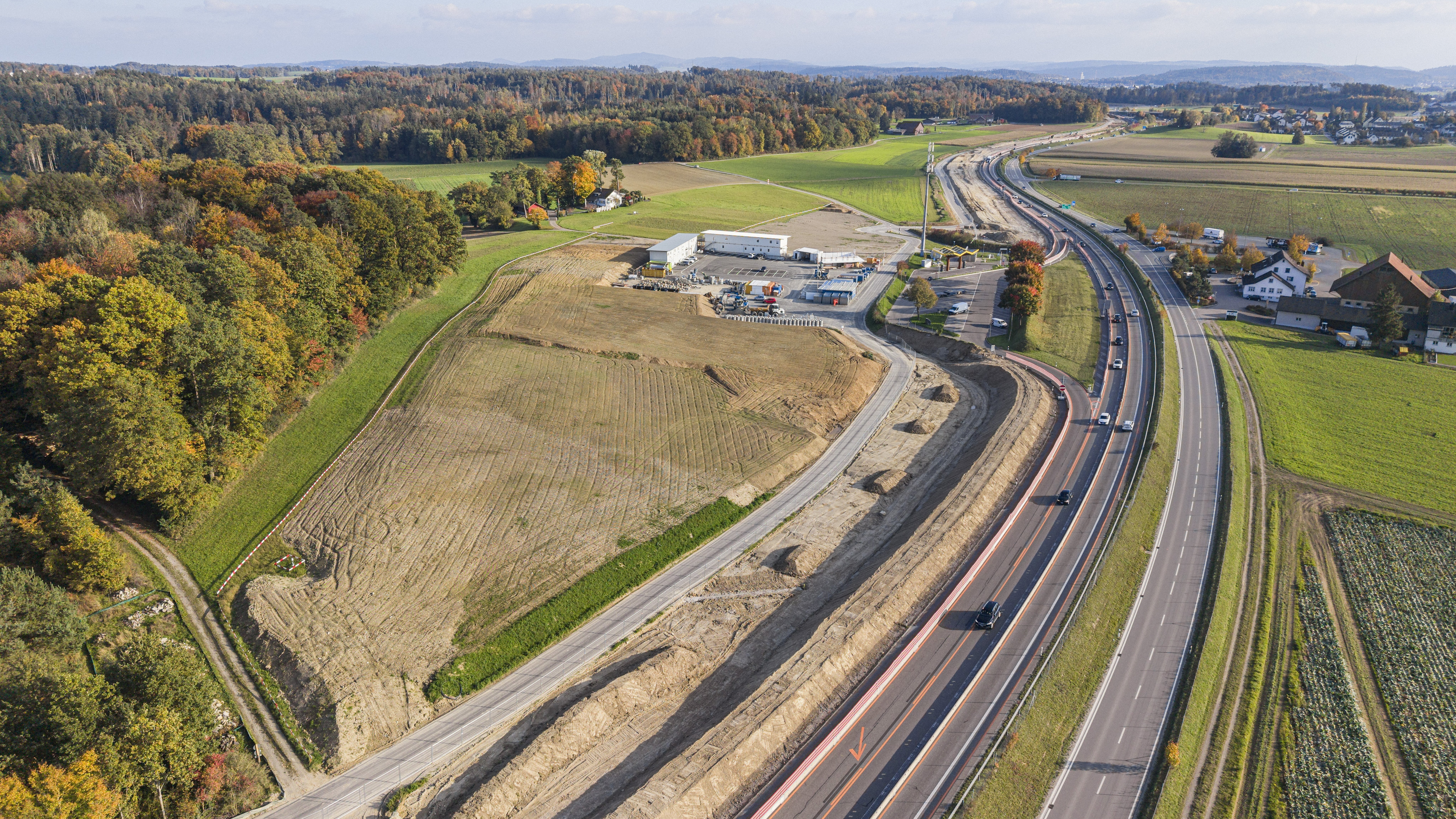
The plan is to start building the crop rotation areas in spring 2026. By the beginning of 2029, the Weinland highway should be expanded and the current lanes upgraded. When the new four-lane highway goes into operation in 2029, farmers will be able to manage the new, compensated crop rotation areas.



